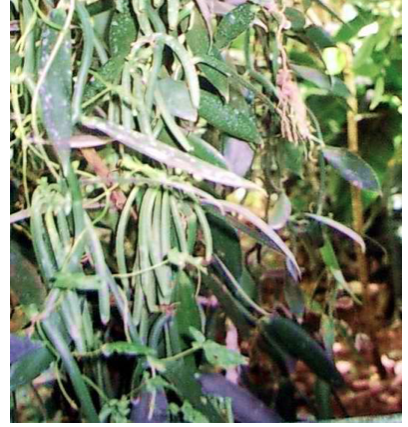By Dr. Ulrich Berk (Germany)
For good health proper diet with nutritious vegetables, fruits, and grains is of great importance. But it seems that with the food produced nowadays our bodies often do not get all the micronutrients they need to maintain good health. Several recent studies show that there is a decline in nutritional value of vegetables, fruits, and grains.
A Scientific American article summarizes several such studies which compare the nutrient levels of food nowadays with tables of nutrient content 50 to 70 years ago.
One study showed that average calcium levels in 12 fresh vegetables dropped 27 percent; iron levels 37 percent; vitamin A levels 21 percent, and vitamin C levels 30 percent. Another study comparing nutrient levels of 20 vegetables found that the average calcium content had declined 19 percent; iron 22 percent; and potassium 14 percent. Yet another study concluded that one would have to eat eight oranges today to derive the same amount of Vitamin A as our grandparents would have gotten from one. (See: www.scientificamerican.com/article/soil-depletion-and-nutrition-loss)
Other studies cited by Worldwatch Institute report that today’s food produces 10 to 25 percent less iron, zinc, protein, calcium, vitamin C, and other nutrients. Researchers from Washington State University who analyzed 63 spring wheat cultivars grown between 1842 and 2003 found an 11 percent decline in iron content, a 16 percent decline in copper, a 25 percent decline in zinc, and a 50 percent decline in selenium.
(http://www.worldwatch.org/node/5339)
The decline of nutritional value of our foods not only refers to minerals and vitamins. There is also a loss in phytonutrients, most of them less known to most of us – but they play an important role for preventing disease and maintaining good health.
These plant extracts show antioxidant, bactericidal, and antimicrobial effects.
A lack of nutrition in our foods leads to a number of diseases and ailments.
Human health conditions such as chronic coronary thrombosis, hypertension, diabetes, osteoporosis, cancer, old age, and lifestyle-related diseases are associated with the diet. Declining food quality can thus be one reason why such lifestyle diseases are increasing in the last decades.
Several theories have been suggested to explain the decline in food quality. The main reasons for that seem to be:
- Soil depletion (remember – we have talked about that subject earlier)
- Changes in cultivated varieties: nowadays are mostly growing high-yielding varieties which are less nutritious than the plants being used earlier.
Agrochemicals used in conventional farming: a 2001 review study, published in the Journal of Alternative and Complementary Medicine, shows that nutrient levels, including vitamin C, are lower in crops grown with chemical fertilisers. Organic spinach, lettuce, cabbage and potatoes showed relatively high levels. Commenting on this study one scientist explained: „Unlike minerals, vitamins and antioxidants are not supplied by the soil, so you cannot add them using fertilisers. They are produced by the plants themselves and are natural pest-defence compounds, part of a range of chemicals we are just beginning to understand. Studies have shown that levels are up to 40 per cent higher in organic produce. If you’re using artificial pesticides, plants don’t have to produce these protective chemicals. Levels in non-organic foods are likely to be lower.“ ( From The Guardian, https://www.theguardian.com/lifeandstyle/2005/may/15/foodanddrink.shopping3)
Now let us see whether Homa Farming has a positive effect on the nutritional value also. Again we find a lot of information in the four M.Sc. theses done at Dharwad Agricultural University (Karnataka, South India). Homa Farming methods were compared with organic methods (without Homa) and with conventional farming methods. The crops planted were soy beans, cabbage, tomatoes, and okra. (Okra is also known as ladies’ fingers, a
vegetable quite popular in Asian and African countries.)
Results were as follows:
Soy beans
5% increase in protein content.
9,5% increase in oil content.
Enzymes
-Amylase was increased by 35% compared to control in unsprouted seeds. After germination this increase went up to 66%.
Invertase was increased by 45% compared to control in unsprouted seeds. After germination this increase went up to 100%.
Cabbage
TSS (Brix) value in cabbage increased by 39% compared to control. „TSS“ means „Total soluble solids“. Brix is the unit (one degree Brix means 1% in the solution). Brix is an indicator for food quality: Higher Brix means higher nutrient density, better taste, resistance to disease – better quality. Ascorbic acid (vitamin C) was increased by 11%. Total free phenols (important for their antioxidant effects) were increased by 18%. Protein content increased by 16%. Nitrogen content increased by 19%, sulphur by 71% and potassium by 19%. Also micronutrients like Cu, Zn, Mn and Fe were increased between 4% and 13%.
Tomatoes
Increase in quality parameters like ascorbic acid (49%), lycopene (40%), phenols (7%) and TSS (10%) was found due to soil and foliar application of Homa. Biosol as compared to organic control.
Okra
Increase in quality parameters of okra like ascorbic acid (0.5-34%), phenols (2-8%), nitrogen (3-28%), phosphorus (4-58%), potassium (45-98%), micronutrients like Cu, Zn, Mn and Fe (51-52%, 31-48%, 3-17% and 2-23%, respectively) was registered due to different homa treatments as compared to conventional control not exposed to homa atmosphere at crop harvest stage.
Vanilla
Another very interesting result was from Abhay Mutalik Desai who has his Homa Organic Farm near Belgaum (Karnataka, India). He grew vanilla, and before selling he gave samples of the vanilla to a lab for testing the vanillin content. The best commercial result is 25% to 28% vanillin by weight. But his result was 36% by weight. The lab people first thought they had made some mistake in the analysis as such a high value was not seen before, so they ran the test again – with the same result. This shows that in Homa Farming important nutritional parameters are increased, in some cases quite drastically.
Homa Organic Farming products thus support our health as they supply us with all sorts of micronutrients which our bodies need (and often do not get). You could even say that Homa Farming food becomes a medicine.





